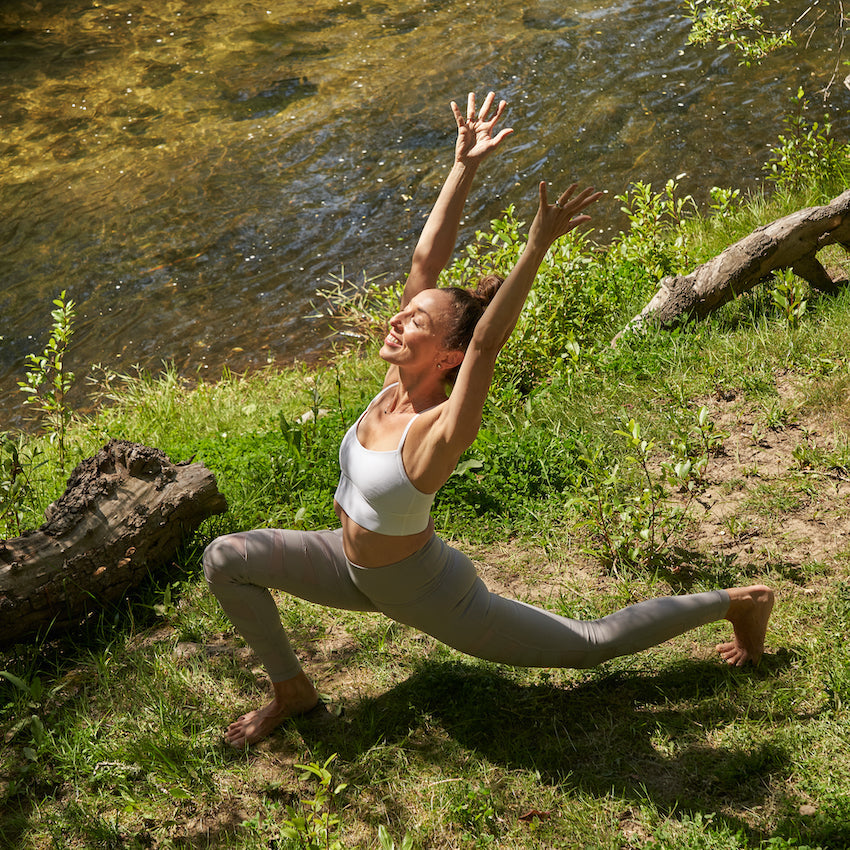
Habit Stacking: A Simple Way to Boost Your Wellness
Share
Nearly 50% of American’s have New Years resolutions focused on health. By Valentine’s Day, nearly 80% of us abandon our bright, shiny resolutions and return, heads held low to old habits and stale ways of operating. Whether your goals are to prevent or reverse chronic disease, slow the aging process, or just drink more water, keep reading below!
One tip for sticking to your resolutions and creating lasting change is setting a goal and breaking that goal up into actionable steps, then choosing one of those steps and seeing where it may fit into your existing habits! That's called habit stacking.
Habit stacking is a method of building new habits by linking them to existing ones. For example, if you want to start meditating, you can stack it on top of your morning coffee habit. So, every time you brew a cup of coffee, you also sit down for a few minutes of mindfulness. Or enjoy your cup of tea with some light stretching.

The science behind habit stacking is based on the concept of cue-routine-reward, which is how habits are formed in the brain. A cue is something that triggers a behavior, a routine is the behavior itself, and a reward is the positive outcome of the behavior. By stacking a new habit on an existing cue, you make it easier to remember and perform the new routine. And by choosing a reward that reinforces the new habit, you increase the chances of making it stick.
If you've been reading our wellness rounds you may feel overwhelmed by the habits these seemingly superheroes seem to have. From Dr. Lilli Link to Lisa Malin, Joanna Cohen to Dr. Susan Blum. But all of these people have amazing habits most likely from layering them into existing habits, and after years of doing this you create powerful programs of success.
According to research, it takes about 60 days for a new habit to become automatic. That means you need to practice your habit stacking consistently for two months before it becomes part of your lifestyle and before you layer in new habits. But don't worry, habit stacking can help you overcome the challenges of forming new habits, such as lack of motivation, procrastination, and forgetting.
Here are three simple steps to start habit stacking today:
- Step 1: Identify your existing habits. Make a list of the things you do every day without thinking, such as brushing your teeth, checking your email, or watching TV.
- Step 2: Choose new habits that align with your wellness goals. Think about what areas of your health you want to improve, such as physical, mental, emotional, or spiritual. Then, pick one or two new habits that can help you achieve those goals. For example, if you want to boost your physical health, you can choose habits like drinking more water, stretching, or moving more.
- Step 3: Link your new habits to your existing ones. Find a way to connect your new habits to your old ones, so that they form a logical sequence. For example, if you want to drink more water, you can stack it on top of brushing your teeth. So, every time you brush your teeth, you also drink a glass of water.
Habit stacking is based on the idea of synaptic pruning, the idea that as you age, your brain prunes the connections between neurons that don't get used and strengthens the ones that get used more frequently. Habit stacking works because it is based on the premise that humans crave and act accordingly to the routines we get into. The neurological wiring for the existing habit already exists so your brain is already wired to perform certain tasks, which make it easier to remember and perform the new activity. This is the easiest way to layer in steps to achieving your overall goal.
